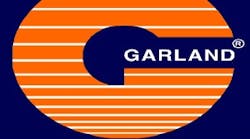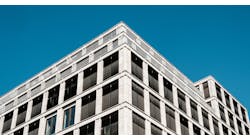As building and facility owners perpetually demand improvement in the performance of thermoset and thermoplastic roof membranes, researchers and chemists have continued to evolve and advance their technologies and capabilities. While improvements have been made to improve the performance of both TPO’s and PVC’s, KEE is indisputably the highest-performing thermoplastic roof membrane on the market.
Here’s why:
- KEE membranes provide superior chemical resistance, flexibility and durability
- It’s the only thermoplastic membrane that can be installed and adhered with asphalt
- KEE retains reflectivity and decreases energy costs
Emergence of KEE
Over the years, TPO’s heat-welded seams have served as an enhancement over the glue adherence in the simplistic EPDM system. However, TPO weathers poorly and earned a reputation for premature deterioration and failure. In response, the development of roof systems continued with the advent of the fire and chemical resistant properties of PVC. Although these advances proved to be advantageous, TPO and PVC’s limitations did not go unnoticed.
While PVC is a serviceable membrane, it is a rigid material that must be modified with liquid plasticizers in order to be flexible and manageable. The liquid plasticizers dissipate and evaporate over time, which inevitably leads to the membrane drying, cracking and becoming more vulnerable to leaks. To combat this problem, Ketone Ethylene Ester (KEE) was introduced as an improvement over the traditional liquid plasticizers in PVC.
KEE is a high molecular-weight polymer additive that provides multiple performance benefits to the PVC that regular liquid plasticizers do not offer. For a roofing membrane to be classified as a true KEE sheet, it must contain at least 50 percent KEE polymer content by weight. This composition requirement gives the membranes unparalleled chemical resistance, flexibility, and durability, thereby eliminating the extreme dehydration problem with regular plasticizers and increasing the overall lifespan of the roof. Not only does KEE improve the quality of the membrane, but it improves the roof’s efficiency and increases the convenience for owners as well. KEE is the only thermoplastic membrane that can be installed and adhered with asphalt. Because of its enhanced resistance to dirt retention, KEE retains reflectivity longer than its thermoplastic counterparts and, thus, decreases energy costs.
Despite the technological advancements of KEE, it is still considered best practice to incorporate KEE into a multi-ply, hybrid system. Specifically, implementing a modified bitumen base sheet underneath the KEE cap sheet resolves the inherent flaw with all single membrane roof assemblies. Relying on just a cap sheet as waterproofing for the insulation and entire building, single-ply roofs are extremely susceptible to a single hole or penetration compromising the whole system. Hybrid KEE assemblies eliminate this possibility by combining the chemical resistance and application ease of KEE with the strength and durability of a traditional multi-ply waterproofing system.
While KEE is indisputably the highest-performing thermoplastic roof membrane on the market, the benefits of a time-tested multi-ply system can help alleviate the concerns accompanying single-ply roof assemblies. High tensile strength, modified base sheets are best suited for this application, and have been proven to be a shrewd, cost-effective investment for building owners. This implementation of a hybrid KEE system harnesses the best of both worlds: the chemical resistance and ease of installation intrinsic to thermoplastic membranes, in conjunction with the superior waterproofing and strength of a traditional multi-ply, built-up roof. KEE is the future of thermoplastic roof membranes, and for those requiring the highest performing, most cost-effective thermoplastic roof on the market, look no further than a hybrid KEE system. Click here to visit our website.
Stephen Wolf is a product manager for The Garland Company.


